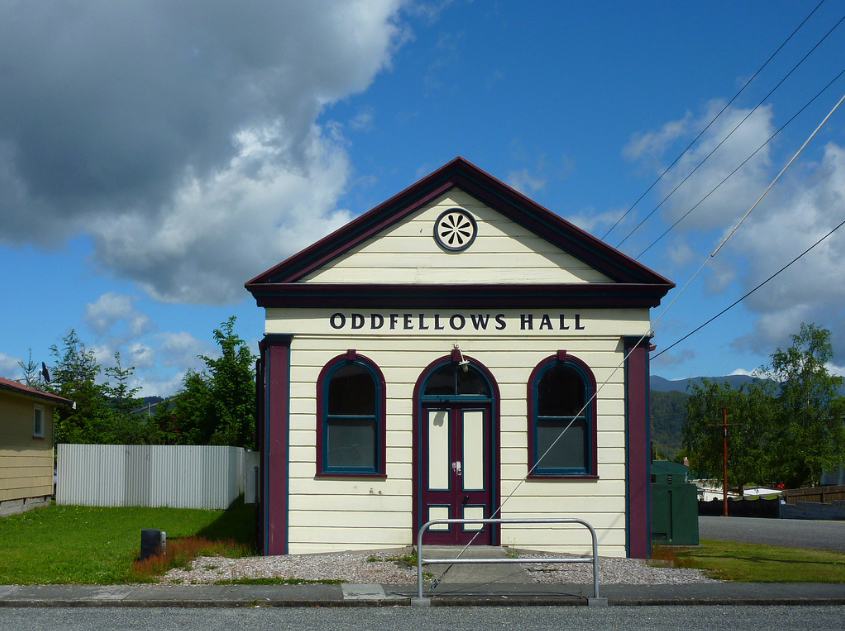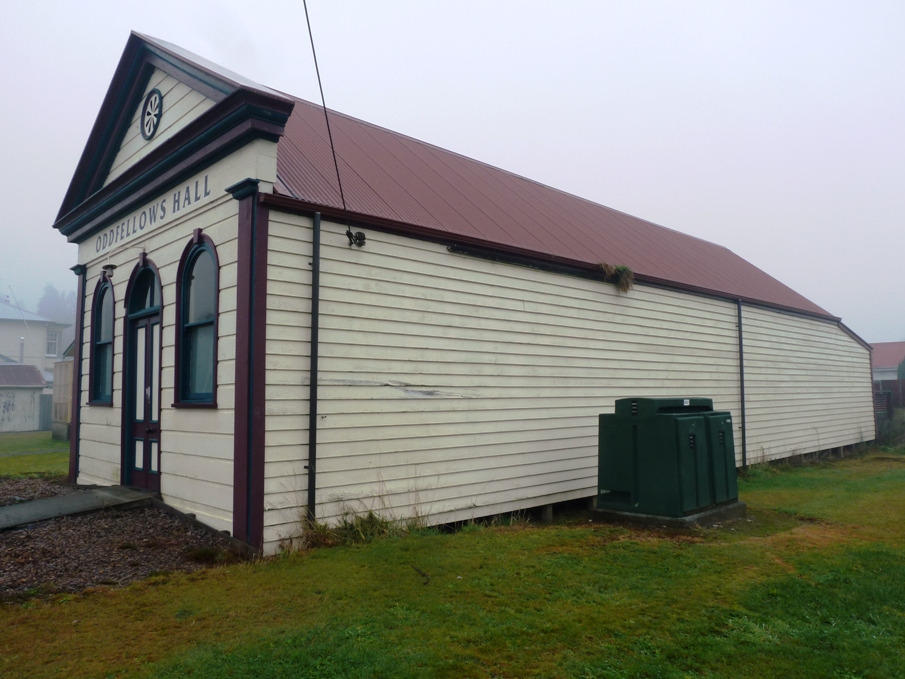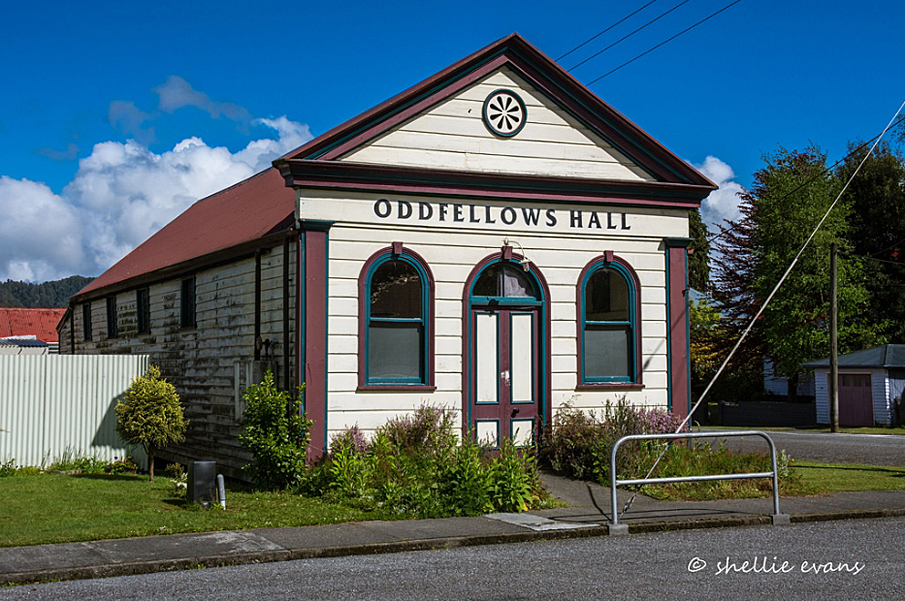Constructed in 1872, the Oddfellows Hall now at 56 Bridge Street, Reefton, is a rectangular, gable-roofed, single-storeyed timber building, with strong connections to with Reefton’s two most famous industries: quartz mining and hydro-electricity. A rare survivor as one of the buildings constructed in the gold town’s boom year of 1872, the building is notable for its use, in August 1888, as a lighting showcase of the first public electricity supply in New Zealand. Oddfellows Hall has aesthetic, architectural, cultural, historical, technological and social significance or value. Te Tai Poutini - the West Coast - features prominently in the early Māori history of occupation in Aotearoa/New Zealand. Nohoanga, mahinga kai and mahinga toi were dotted along rivers and plains although only a few permanent kāinga were established at the western terminus of these long travel routes. When Pākehā began arriving in the area in nineteenth century, Māori played a key role in assisting newcomers with surveying, exploration and gold mining. The gold rushes on the West Coast began in 1865 with quartz lodes or reefs being discovered in the Inangahua district in 1870. At the centre of this district was Reefton (the ‘Reef Town’), growing rapidly from the early 1870s. The district surveyor, George Woolley, laid out the town’s roads and drew up detailed plans of the various mine sites. The Reefton Lodge of Independent Order of Oddfellows, Manchester Unity, was established in 1872. In May 1872 the offer of Messrs Slattery and Sutherland to erect a lodge room for the use of the Reefton Oddfellows was accepted by that society. Slattery and Sutherland were building a large hotel in Broadway and that the same time they arranged to have built a room 22 feet (6.7 metres) by 40 feet (12.1 metres) in Upper Broadway, capable of seating 500 persons, for the use of the Reefton Lodge of Oddfellows. The hall was described as being near completion in July 1872. Now situated at 56 Bridge Street, on the corner of Bridge and Shiel Streets, the single storeyed timber building is rectangular in plan, clad in rimu rusticated weatherboard which rests on timber bearers. The roof is corrugated steel. The main (east) elevation, fronting Bridge Street, is the only decorated part of the building, as the north elevation is void of fenestration and the south and west sides have only small square windows set relatively high up within their respective elevations. The double entrance door within a curved arch is flanked by a pair of sash windows with matching curved arches. Above the door and windows, just below the moulded pediment, is the name ‘ODDFELLOWS HALL’. Near the apex of the gable end is a decorative ventilation circle. The western end includes a lean-to roof arrangement. The interior of the hall is timber lined and has a raised stage located at its west end with two doors leading to two small rooms in the lean-to area. In April 1873 Slattery’s Hotel and Oddfellows Hall in Broadway were put up for auction, with the hall being described as ‘substantially built of well-seasoned timber, and occupies a frontage of 22 ft. to Broadway by a depth of 40ft.’ The purchaser of both hotel and hall was Thomas Watson, who quickly sold to John Dawson. Lodge minutes for June 1873 record resolutions to explain to Dawson what was required to make the room suitable as a lodge room. Other uses were also found for the hall. For example, 1875 newspapers reported Richard Reeves holding the first of many mining stock sales at the Oddfellows Hall. Other uses included lectures, music lessons and performances, banquets, balls and a range of entertainment, including magic shows, and early Presbyterian church services. From around 1883, it appears that the hall was often referred to as Kater’s Oddfellow’s Hall (or just Kater’s Hall), after Anthony Kater, proprietor of the Exchange Hotel and associated Oddfellows Hall. A member of the Masonic and Oddfellows’ orders, Kater lived in Reefton from 1873 until his death in 1896. It was under his proprietorship that the hall gained its greatest fame, as the venue for lighting demonstrations by Walter Prince, the promoter behind New Zealand’s first public hydro-electricity scheme which was switched on at Reefton in 1888. On 6 August 1888, the Inangahua Times reported the exciting public exhibition at the Oddfellows Hall as follows: ‘Rows of lamps were suspended down the building, encased in a variety of fantastically shaped shades of different colours, and the whole scene was one of striking splendor. It was indeed a “Hall of dazzling light”. Although not without controversy over the following months, the exhibition and subsequent installation of wired electric lighting in the hall was the topic of discussion nationally. In September 1888, around 400 Houston lamps were erected in the Oddfellows Hall and the Council Chambers in order to test the capacity of the motive power and dynamo. That same month, Forsyth and Masters, hardware merchants, were the first premises to be permanently connected to electricity mains and other building owners soon began congratulating themselves on having electric lights installed – Inangahua Times, Dawsons Hotel, St Stephen’s Anglican Church, for example – and the town became the first in New Zealand, and amongst the earliest in the world, to have a public electricity supply. In 1906 the Oddfellows Hall was moved by Mr Lockington’s traction engine around the corner to its current site at 56 Bridge Street, on the corner of Bridge and Shiel Streets, Reefton. In its new location, the hall was renovated both inside and out. It continued to have a variety of users, including the Salvation Army, Oddfellows and Druids, Baptist Church, guides and scouts, and occasionally functions such as wedding receptions were held there. After the Inangahua Earthquake of 1968, the building was used as a temporary telephone exchange and post office. After that the building was used for storage for several decades. In 1990, the building was sold by Morris Mines to the Reefton Historic Trust Board Incorporated for $1,600. In 1999-2008, an extensive programme of repair and restoration included re-piling, re-roofing and repainting was carried out, and the kitchen at the rear was replaced.



Location
List Entry Information
Overview
Detailed List Entry
Status
Listed
List Entry Status
Historic Place Category 2
Access
Private/No Public Access
List Number
3035
Date Entered
9th September 1989
Date of Effect
9th September 1989
City/District Council
Buller District
Region
West Coast Region
Extent of List Entry
Extent of registration includes the land described as Pt Secs 244-246 Town of Reefton (RT NL12/252), Nelson Land District, and the building known as Oddfellows Hall thereon.
Legal description
Pt Secs 244-246 Town of Reefton (RT NL12/252), Nelson Land District
Stay up to date with Heritage this month
